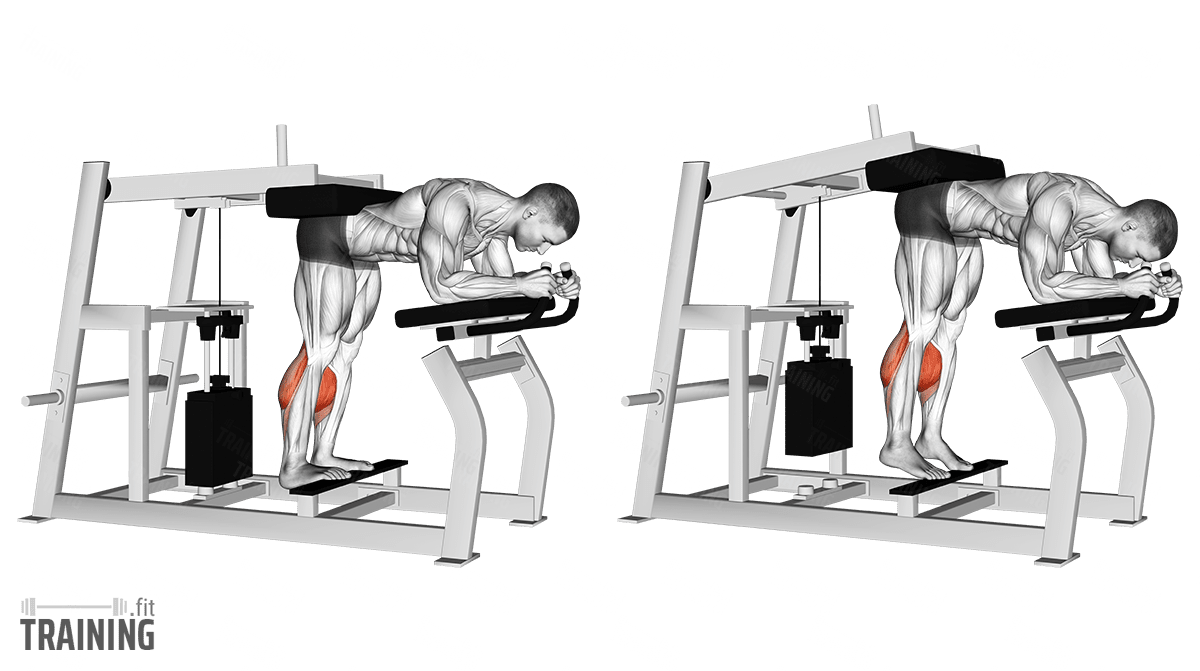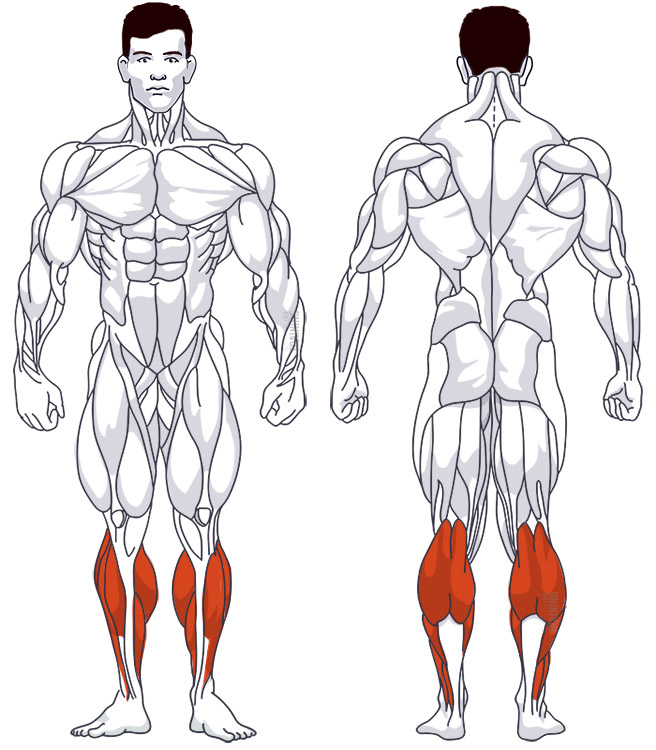Donkey Calf Raise
Isolation exercise, MachineOverview

Main muscles
- Lower leg: Short fibula muscle
(Musculus peroneus brevis) - Lower leg: Long big toe flexor
(Musculus flexor hallucis longus) - Lower leg: Long fibular muscle
(Musculus fibularis longus) - Lower leg: Long toe extensor
(Musculus extensor digitorum longus) - Lower leg: Soleus muscle
(Musculus soleus) - Lower leg: Anterior tibial muscle
(Musculus tibialis anterior) - Lower leg: Twin calf muscle
(Musculus gastrocnemius)
Training plans
Donkey Calf Raise is a suitable substitute for similar exercises in or as a supplement to various training plans.
Donkey Calf Raise: Basics and alternatives

Involved main muscle groups:
Donkey Calf Raise
Donkey calf raises are a unique form of calf exercise that you might not see as often at the gym. Nevertheless, let’s take a closer look at this uncommon exercise below.
Unlike regular calf raises, donkey calf raises involve placing the weight as close to your legs as possible. In the appropriate machine, a padded plate rests on your tailbone, and you lift the weight by raising your heels. This is usually considered more comfortable than having a barbell on your neck or holding heavy dumbbells. However, it’s still an isolation exercise for your calves.
Alternative exercises that you’re more likely to find in gyms on standard machines are standing or seated calf raises on the machine.
Correct execution
Donkey calf raise machines come in various designs, but the basic layout is always quite similar. Sometimes you lift the weight off the floor, while in other machines, the weight is at tailbone level. In both cases, it’s important to adjust the height of the tailbone pad to fit your body size.
Video tutorial
Step-by-step instructions
Stand with both feet on the base plate or bar and position your tailbone under the pad.
Simultaneously, lean your upper body forward, rest your forearms on the provided pad, and grab the handles (if available). Ensure you don’t form a rounded back.
Slightly bend your knees, don’t fully extend them.
Lift the weight by raising your heels. As you do so, your hips will rise. Your upper body remains in the same position as before.
Lower the weight again in a controlled manner.
Common mistakes
Avoid fully extending your knee joints when standing in the machine. By keeping your knees slightly bent, there’s less stress on them.
Also, be sure to use an appropriate training weight. Too much weight can lead to using momentum to lift it. However, that means you won’t be able to use the full range of motion, and the training effect is reduced.